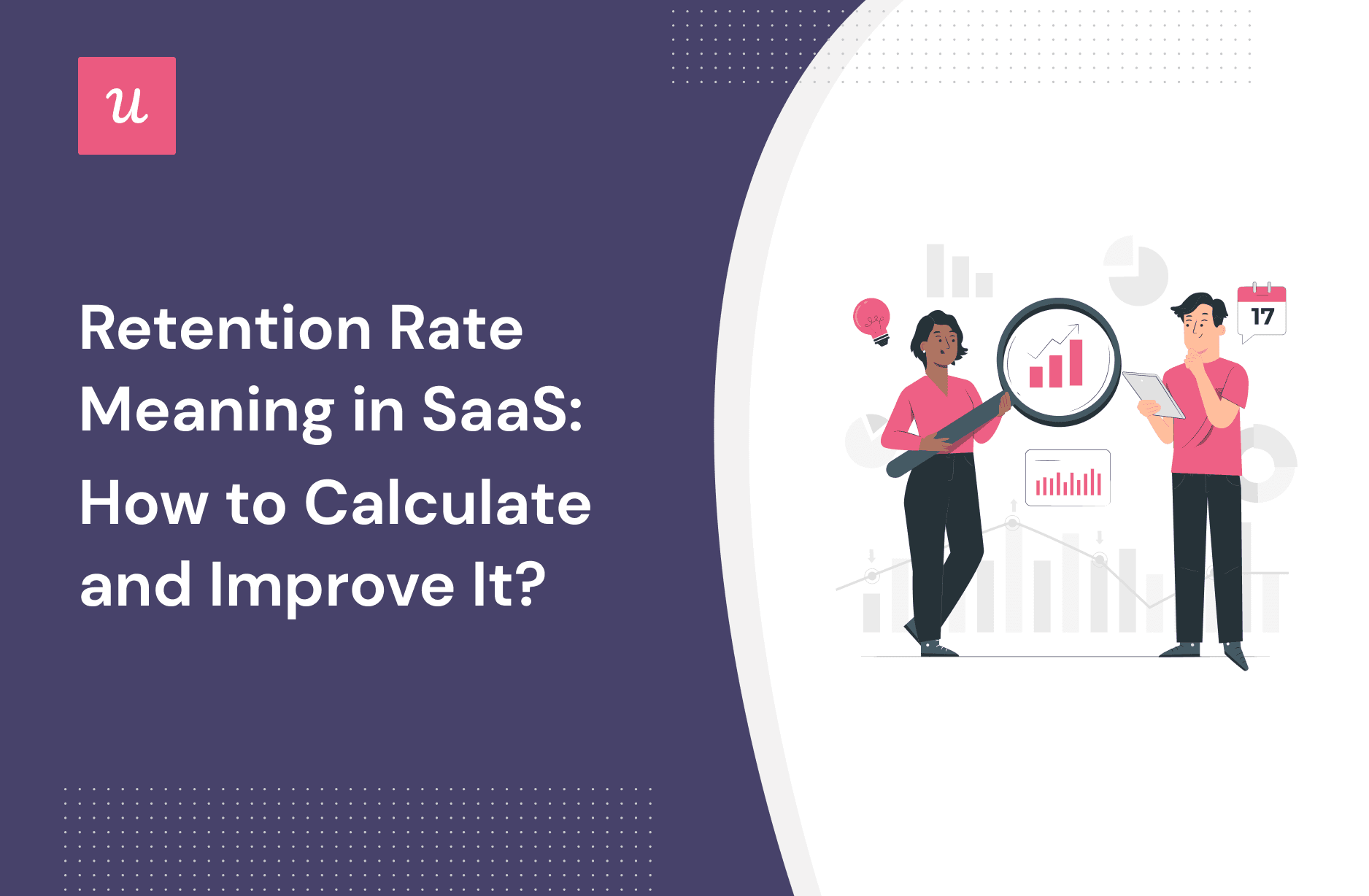
It is absolutely critical for any product manager to have a strong grasp on the meaning of retention rate.
Being able to calculate retention rate, analyze what it means, understand the impact on customer loyalty, and figure out ways to improve customer retention are all vital skills to master.
We’ll be covering all of this in our article. Ready to get started?
Try Userpilot Now
See Why 1,000+ Teams Choose Userpilot

What does customer retention rate mean?
The customer retention rate refers to the overall percentage of users who keep paying for your product or service over a given time period.
Why is it important to measure retention?
Product managers are busy people. Why should they spend their time calculating retention rates and diving into data? The following reasons explain why is it important to measure retention – no matter how much one is busy.
Customer retention is cheaper than customer acquisition
Keeping hold of existing customers is far more cost-effective than seeing your number of churned customers go through the roof, and having to figure out how to acquire new ones.
You want to build a retention strategy that will retain customers for a long time – that way you’ll save significant costs.
Retained customers have a high customer lifetime value
Reducing customer churn and keeping hold of customers means they’ll have a far higher lifetime value (i.e., the total amount of money a customer will spend on a company’s product during their relationship with that company).
Users with high lifetime value keep investing in your product and expanding your revenue through upgrades – which explains why you must retain them.
Increased number of loyal customers
Focusing on retention is valuable because it gives you an accurate idea of how many customers remain loyal to your organization. Put simply, the better you are at retaining customers, the greater your overall customer loyalty will be.
Loyal customers can become one of your best marketing tools, as they spread positive word-of-mouth and boost product-led acquisition.
Is a high customer retention rate good?
A key rule of thumb is that the higher your customer retention rates, the better. A high retention rate means your product is valuable and your customers wouldn’t switch to a competing company.
For SaaS organizations, a customer retention rate of 35% or above is considered elite.
How to calculate customer retention rate?
Now, let’s get to the crux of the matter: how do you actually go about calculating your customer retention rate? There are a couple of key factors to bear in mind:
- Time period. What time period do you want to measure retention over?
- How you measure product usage. How are you going to define what constitutes ‘usage’ in the context of your product?
Luckily, there’s a simple formula you can plug numbers into to work out your customer retention rate.
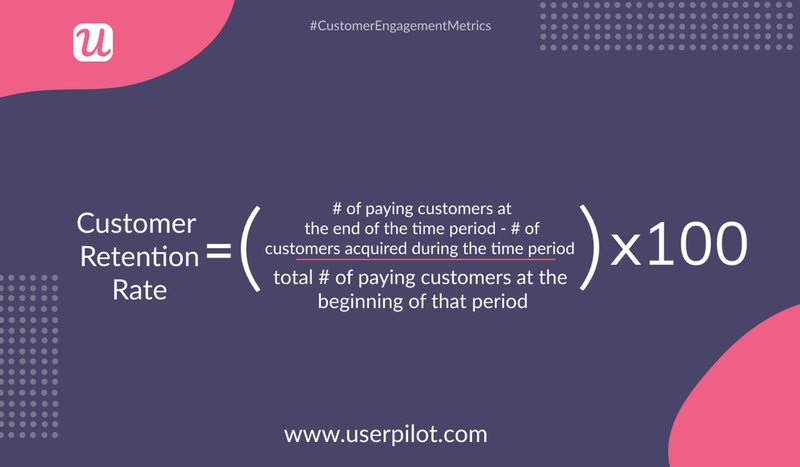
Let’s explore an example to bring this formula to life. Imagine you want to determine your customer retention rate for the previous calendar year. Here is some usage data:
- You had 700 existing customers as of January 1.
- You captured 100 new customers between January 1 and December 31.
- As of December 31, you had 650 customers.
Inserting these numbers into the formula above, you derive the following number:
(650 – 100 / 700) x 100 = a customer retention rate of 78.6%.
Advanced methods to calculate retention rate
The above formula was a simple one to get you started. There are several other retention formulas that will show you a more detailed image. We’ll explain how to use them to calculate customer retention rates below.
- Classic retention. The idea behind classic retention is to start your percentage calculation from ‘Day 0’ or the day customers first used your app. This means the time period runs from the ‘Nth’ day (i.e., however long after the period starts) after day 0, divided by day 0.
- Range retention. Range retention works similarly to classic retention, except it involves a time frame spanning multiple days instead of a single day. The industry norm for SaaS businesses is to use either a weekly or monthly range. Range retention is calculated by dividing the number of customers who use the product during a time frame by the number of users who first used the app within an initial time frame (of the same interval).
- Rolling retention. This will help you determine the retention of users on or after a specific day. It’s useful for gauging the long-term retention value of your customers. Calculate rolling retention by dividing the number of users whose last day of activity is on or after Day N, by the number of users who first used the app on Day 0.
Strategies for improving customer retention rates
How do you improve retention rates for your existing users and convert them into loyal customers? The following strategies will help you achieve just that.
All the below strategies can be easily implemented through Userpilot’s retention software. With the right tool in place, you’ll be able to improve retention in no time.
With Userpilot’s native mobile SDK, you can also apply these powerful retention strategies directly within your mobile app, effectively onboarding and engaging users through personalized messaging, push notifications, and surveys.
Create a personalized onboarding experience
First and foremost, you need to educate your new customers on how to use your product. They shouldn’t feel like they’re getting a generic experience but rather an onboarding personalized to their needs. The better you address your users’ needs, the shorter the time to value.
This means they quickly realize how much value your product has to offer, and they’ll likely stick around to reap the rewards.
How do you go about gathering the valuable data you need from your customers? You could use a welcome survey to build a deeper understanding of what they’re trying to achieve, their background, demographic information, and more.
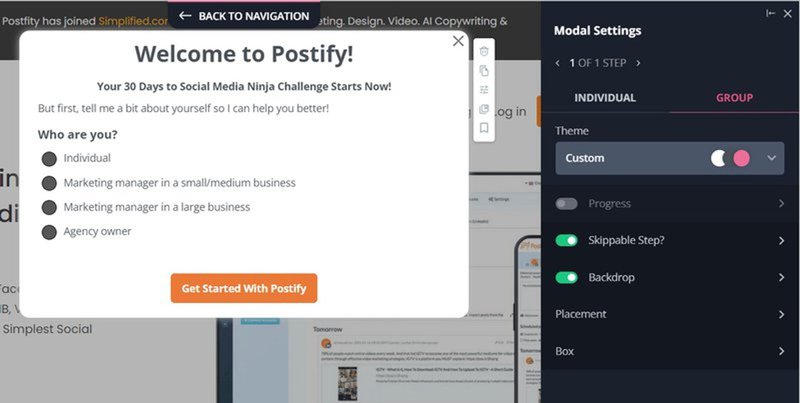
Implement an onboarding checklist to drive adoption
New customers need to be welcomed into your app. Creating an interactive checklist is a great way of getting them on the right track by breaking down complex tasks into much more manageable and actionable steps – this will help increase adoption.
By boosting adoption, you’ll see a positive impact on the retention rate: the better a user understands your product, the more value they’ll get, and the more likely they’ll be to stick around.
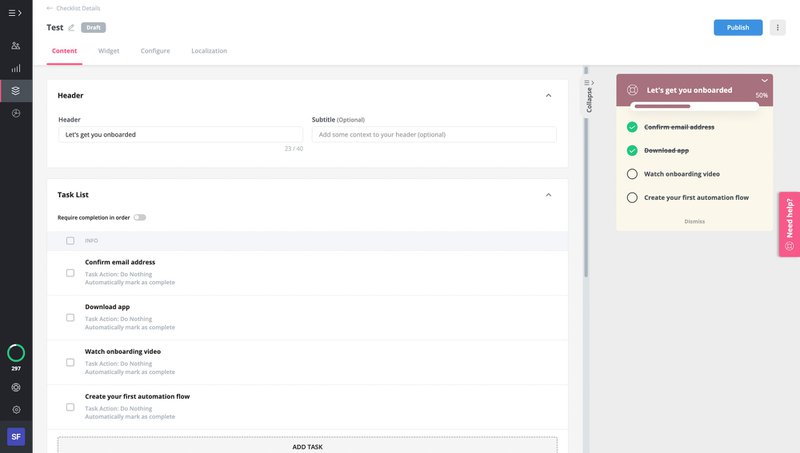
Leverage secondary onboarding to retain existing customers
Customer onboarding has multiple stages: primary onboarding is mainly about new customers, but you can’t forget about the value of secondary onboarding.
Secondary onboarding is focused on increasing the value your existing customers get through feature discovery and a deeper understanding of your offerings. There are multiple UX patterns to use to communicate this value: tooltips, modals, banners, slideouts, and more.
It can play a big part in your retention strategy. The more value a customer gets from your product, the longer they’ll be willing to pay for it (and the higher the number of customers you’ll retain).
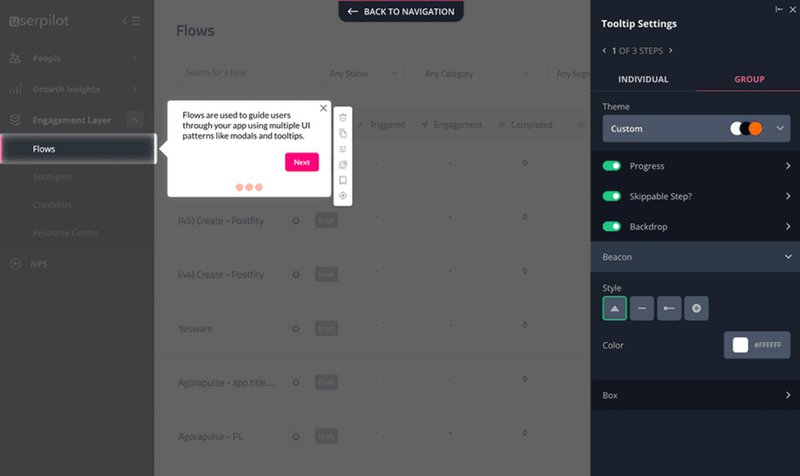
Monitor product usage data to identify friction points
You will make your best decisions when you are empowered with product data. Another way to boost your retention rate is to create a frictionless experience. Track events and user journeys to identify the specific points in the process users drop off, face friction, and experience frustration.
Removing friction points gives you the best chance of reducing unnecessary churn.
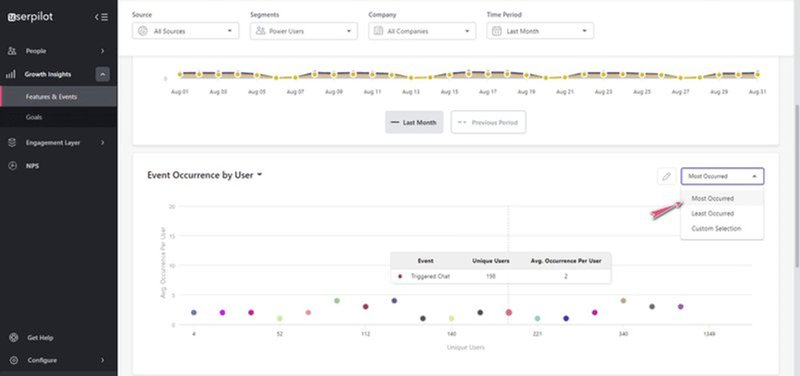
Use churn surveys to understand why users leave
Churn is inevitable: you simply won’t be able to improve your retention rate so much that nobody ever leaves. Rather than stress unduly, make sure you understand why users are choosing to leave. You can find this out through churn surveys.
It might be painful, but all feedback can be helpful – depending on whether you use it to learn and improve your offerings. One easy win is to offer alternatives on the spot to common reasons for leaving. This way, you can see churn reduce and your retention rate improve swiftly.
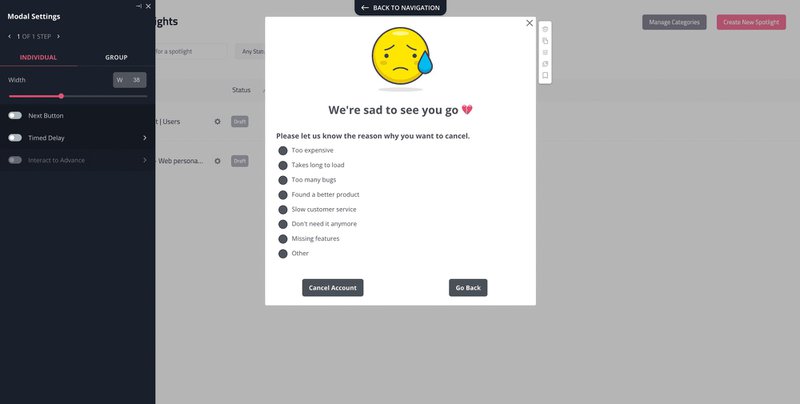
Best customer retention examples from successful SaaS companies
In this section of the article, we’re going to explore some real-life examples of how different SaaS businesses have successfully increased their retention rate. It should give you some valuable insight into how to form your own retention strategy.
ClearCalcs personalized onboarding
ClearCalcs demonstrates the power of personalization with its clear, engaging onboarding flow.
It collected valuable user information regarding their role, goals, and company size through welcome surveys created with Userpilot and then used this information to offer personalized onboarding for different user needs. This helped them increase activation rates in each segment.
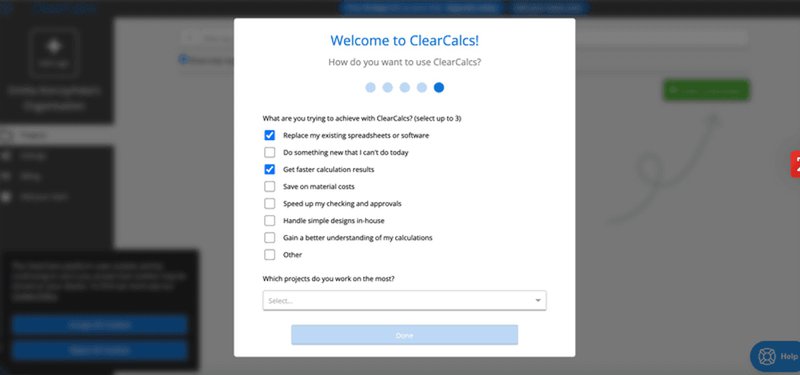
Sked Social onboarding checklist
Sked Social is a SaaS product offering a range of social capabilities. They’re also focused on improving their retention rate through an onboarding checklist.
Sked Social divided the complex task of understanding how the product works into 4 checklist items. They included a progress bar that encouraged users to complete the checklist. Additionally, the first task was already crossed off – this is called endowed progress which motivates users to complete the checklist once and for all.
The result? Sked Social witnessed 3 times more conversions when users completed the checklist (created in Userpilot).
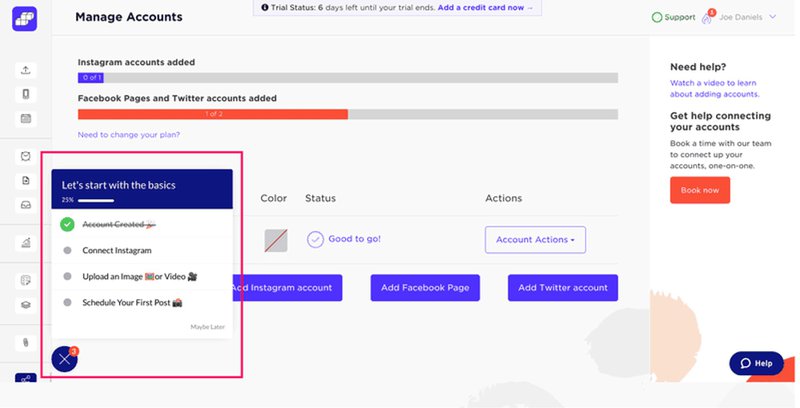
Osano upgrade screens
Osano is a powerful data privacy platform, helping ensure your website or service remains compliant with various legal frameworks and protecting user data.
By triggering upgrade screens in their product interface, they’re giving themselves the best chance of upselling to consumers (i.e., people can choose the plans that work for them).
This along with a range of other features (i.e., walkthroughs and a self-service resource center) led to a drastic reduction in the churn rate.
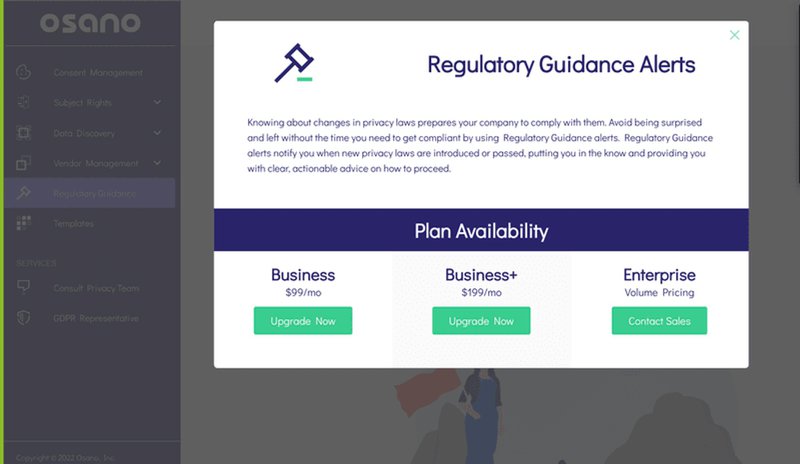
Conclusion
You now have a detailed framework that will help you understand the world of retention and specifically how you can improve retention in your SaaS.
If you want to improve your retention rates, get a Userpilot Demo and see how you can build product experiences that delight your current customers, meet their needs, and keep them as satisfied customers long into the future.






